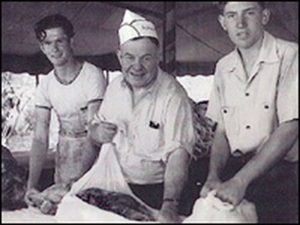In Messages from My Father, Calvin Trillin’s celebrated account of growing up an American Jewish child in St. Joseph, Missouri, he wisely noted that upbringings have themes. Much the same can be said of the ways in which American Jews celebrate Passover. Every year, there seems to be a different theme, a different approach, to the age-old holiday.

A couple of seasons ago, American Jews were all agog about a spate of new hagadot and inundated the blogosphere with comments about their content, physical appearance and, most especially, their authoritativeness. Another year, they turned their collective attention to Passover’s digitization, venting away on whether the latest app might diminish or augment the meaningfulness of the holiday.
This year, American Jewry’s thematic embrace of Passover centers on food. Whether online or in print, stories about what to eat are all the rage, eclipsing virtually everything else. Recipes trump ritual.
Some of these stories have to do with the adaptation of traditional standbys like matzoh balls or gefilte fish. Others reflect the globalization of Jewish cuisine, calling on readers to expand their repertoire of holiday fare: Think Turkish, not Polish! Still other accounts, their tongues firmly planted in their cheeks (at least I hope that’s the case), encourage readers to fill their glasses in the course of the Seder with the likes of Red Nile, a fiery cocktail of potato vodka, tomato juice, Arak and horseradish.
This year’s gastronomic commotion was sparked, I suspect, by the decision of the Orthodox Union, one of the nation’s leading kashruth authorities, to certify quinoa as a Kosher-for-Pesach product. For years, rabbis were reluctant to do so, arguing that even though quinoa was an herb, not a grain, it looked like a grain -- and tasted like one, too – rendering it unfit for Passover consumption. But in 5774, after much study and contemplation, they reversed their position, prompting consumers to cheer “Hooray” at the prospect of banishing what an earlier generation of American Jews had once called “matzoh monotony.” Out with farfel and potatoes, in with quinoa!
A testament to its pliability, the food-centric perspective on Passover also makes sense when considered historically. American Jews have a long and distinguished tradition of culinary innovation. After all, they’re responsible for giving the world that singular invention: Chocolate-covered matzoh.
A sweet Pesach to one and all.






